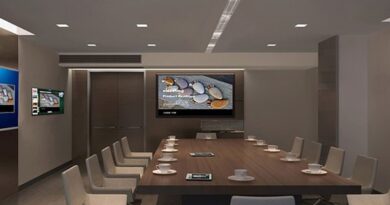River Dining Table: Guide To Building And Buying This Table
If you’re an artistic individual who enjoys playing with colours and paints, you have probably seen the river tables that individuals construct and maintain in their homes. This piece is made of wood and includes more than just beautiful wood treatments. This employs a specific substance known as epoxy resin for wood that may be employed in thousands of creative applications. Epoxy resin for wood is widely accessible on the market and may be used to create almost anything.
Furthermore, social networks are flooded today with individuals producing unique art by mixing woodworking and epoxy resin. There is no excuse why you should not give it a try. There is no need to be concerned if you are unsure how to proceed. Building an epoxy river dining table may be tough, but when done well, the completed table speaks for itself. To learn more about the river dining table, see this blog.
How To Make A River Table?
Follow these tips if you want to make your river dining table.
1. Choose Your Wood
You must first choose the wood from which your river dining table will be made. Check whether it’s both kilns and air-dried, particularly for bigger tables that might distort with time. Maple and black walnut are the most often utilised woods for river tables. Larger tables may also require two slabs of wood.
2. Split The Slab In Two And Level It
Split your live edge slab in half, then square the edges so they can be moulded. Then, using a slab flatter, level the wood slab to eliminate any high places. This technique guarantees that the wood is flat, resulting in a smooth surface on the river dining table.
3. Sand The Wood And Eliminate Any Bark
This is important since it helps the epoxy bind to the wood. You manually sand the live edge wood, beginning with 80 grit sandpaper and working up to 220 grit. Take any loose pieces of wood and bark from the borders of the wood.
4. Make A Mould
After you have positioned the live edge slabs as desired, wrap them with a 2 inches thick wood piece. Placing a flat piece of plastic underneath the board is also suggested so that the epoxy can dry on a level surface. Note that the wider the slabs are spaced apart, the more costly the pour will be.
5. Caulk The Slab’s Ends, Bottom, And Top
Create a dam with caulk so that the epoxy does not spill over the tabletop once you pour it.
6. Secure The Wood In Place Using Clamps
When you pour the epoxy into the centre of the tabletop, utilise parallel clamps to keep the wooden slabs in position.
7. Combine Your Epoxy Resin And Perform A Thorough Pour
Stir your epoxy following the manufacturer’s directions, and colour your epoxy if desired. Fill the centre of the table with a thin coating of epoxy and let it cure fully. This is an excellent method for detecting mould leaks. Once you’ve determined that your mould is the correct colour, you may finish your river table with a last deep pour, then allow it to dry completely tonight. Then polish the item to smooth it off.
What Should You Look For When Buying A River Dining Table?
Choosing a live edge table is challenging, especially if this is your first time purchasing one. You get a broad range of options, from low-cost things like the elegant live edge coffee table to high-end products like the river dining table. Think about the following features to make your job easier:
Butterflies Or Bowties
Bowties are among the most enticing features of a river dining table. They are merely pieces of wood employed to seal tabletop cracks so they wouldn’t get worse over time.
Barking or Not Barking
Typically, artists polish the edges of the wood to a precise degree, removing the covering in the process. Barks are frequently eliminated because they ultimately flake off or make the furniture seem smoother.
Slices
When you search for a live edge coffee table, you will almost certainly come across one made of slices. Because tree slices are sliced horizontally, they frequently feature lovely growth rings. The live edge is now visible from all corners of the table.
Slab
Meanwhile, live edges on both sides of hardwood slabs are exposed by slicing them longitudinally or vertically. Although hardwood slabs are more common, live edge tables made using them are more likely to be found.
Burl
The word “burl” relates to a naturally substantial malformation in a tree. It is frequently a large outgrowth that necessitates specialised skills to cut exquisite items out of without ruining the original edge or grain characteristics.
Conclusion
Since the beginning, individuals have been creating river dining tables with living edges. They were a low-cost, quick-to-assemble approach to manufacturing durable, practical furniture. The settlers transformed raw wooden slabs into live-edge dining tables, chairs, and beds while building their dwellings. Furthermore, due to their rustic appearance, live edge coffee tables are renowned among artists and individuals who appreciate old aesthetics and designs. Many individuals know that furniture manufactured from live edge wood is significantly more costly and fashionable than regular lumber.




